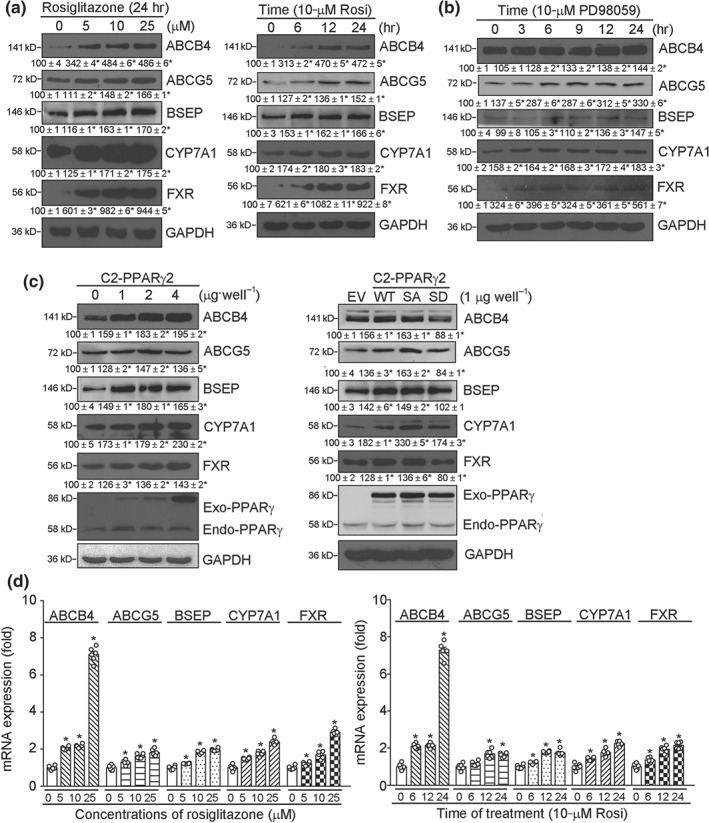Figure 2.

PPARγ activates expression of bile homeostatic proteins in HepG2 cells. (a, b) HepG2 cells were treated with rosiglitazone (Rosi) at the indicated concentrations for 24 hr or at 10 μmol·L−1 for the indicated times (a); PD98059 at 10 μmol·L−1 for the indicated times (b); (c) HepG2 cells in six‐well plates were transfected with wild‐type PPARγ expression vector (C2‐PPARγ) at the indicated concentrations (left panel); or expression vector of wild‐type PPARγ (WT), non‐phosphorylated PPARγ mutant (C2‐PPARγ2‐S112A or SA) or constitutively phosphorylated PPARγ mutant (C2‐PPARγ2‐S112D or SD; right panel) for 6 hr. Cells were switched into complete medium and cultured for another 24 hr, followed by assy for expression of ABCB4, ABCG5, BSEP, CYP7A1, FXR, exogenous PPARγ (Exo‐PPARγ), and endogenous PPARγ (Endo‐PPARγ) protein. * P < .05, significantly different from control, n = 6; (d) HepG2 cells in serum‐free medium were treated with rosiglitazone at the indicated concentrations for 16 hr (left panel) or with 10 μmol·L−1 rosiglitazone (Rosi) for the indicated times (right panel). Expression of ABCB4, ABCG5, BSEP, CYP7A1, and FXR mRNA was determined by qRT‐PCR, n = 6. * P < .05, significantly different from corresponding control group
